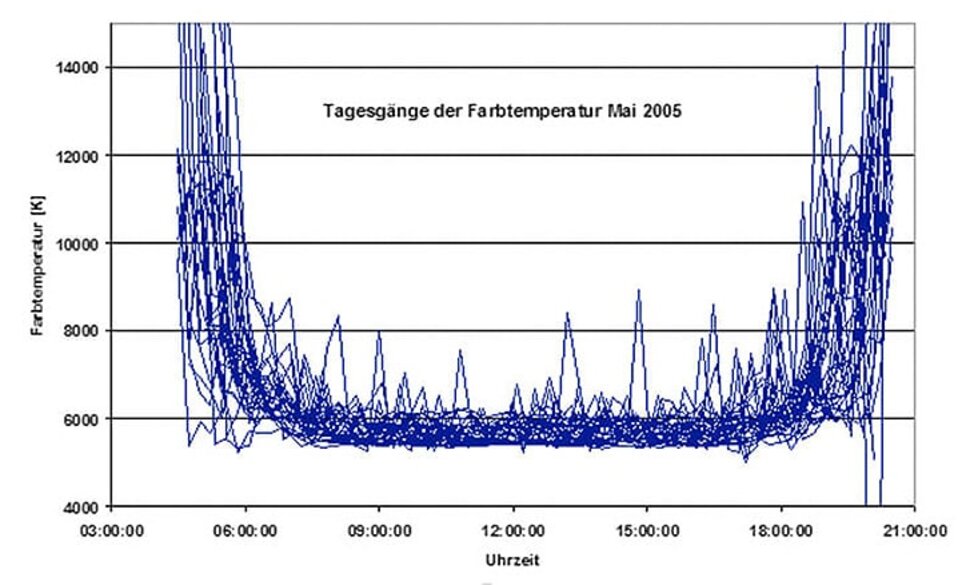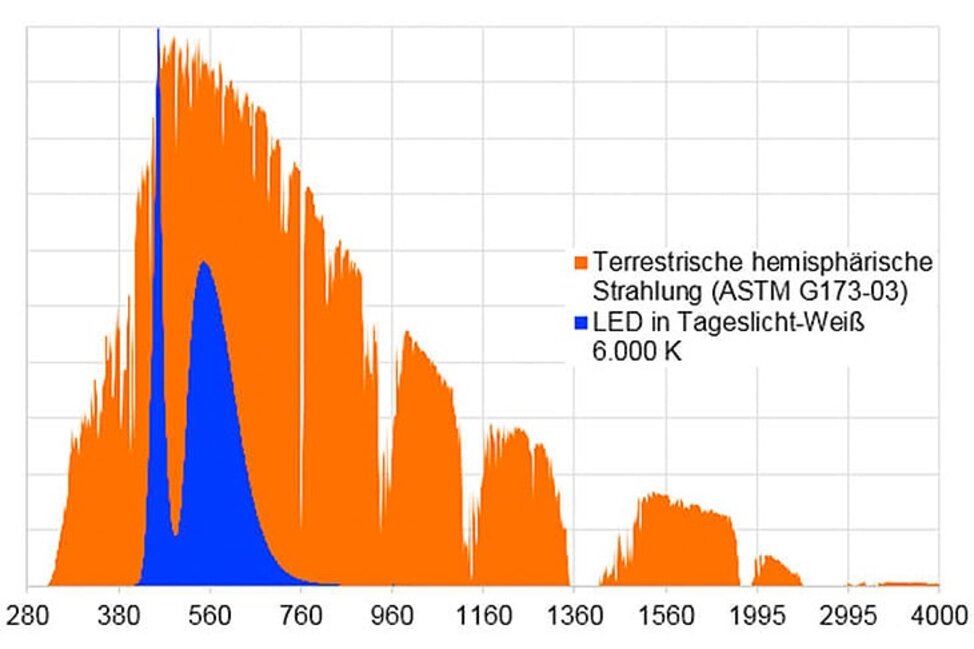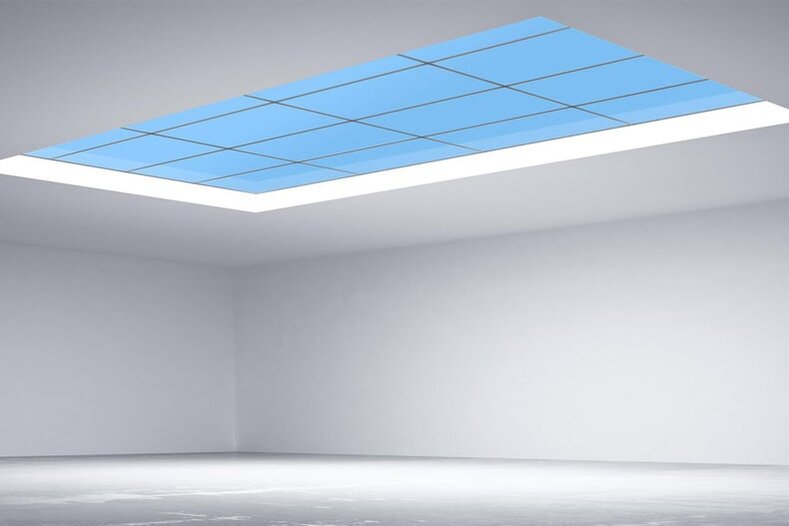What does daylight mean exactly?
We can divide daylight into two components. The first component, mostly known as sunlight, is light which reaches the earth's surface directly and is only available when there is a clear or only partially cloudy sky. The rays of the sun are projected sharply and are almost parallel. The intensity is very high, and illuminances of over 100 000 lx are generated. The second component is light from the sky, usually simply called daylight, which is scattered diffusely by particles in the atmosphere.
Colour and Dynamics
The colour of light, described by the correlated colour temperature, is for sunlight approx. 5.800 K, namely cold light, also called »daylight white«. However, the light colour is subject to strong fluctuations for which there are two main causes. Firstly, the elevation angle of the sun as it shines onto the earth plays a role. The angle influences the distance which the rays must travel through the earth's atmosphere. When the elevation angle is high, the distance is short, when the elevation angle is low the distance is long. Not only does the elevation angle influence the light colour but also the weather situation within the earth's atmosphere, most significantly in the troposphere. Both components of light, direct and diffuse, have contrary colour dynamics. Whereas direct sunlight has its warmest light colour (3 000 K) at sunset and sunrise and its coolest light colour (6 000 K) at midday, the light colour of diffuse irradiance from the sky is completely different. With diffuse irradiance the high colour temperatures arise at dawn and dusk, whereas the lowest values are measured at midday. After sunset and before sunrise the sky may have such an intensive blue saturation that the correlated colour temperature can no longer be used to define the light colour. It is not without reason that photographers speak of the blue hour.

Spectral composition
Natural radiation has its greatest intensity at wavelengths visible to humans in the range of 380 nm to 780 nm. In this waveband there is a continuous, constant spectrum without gaps (for reasons of simplification we will here consciously ignore the Frauenhofer lines).This means that all colours are included although not with the same radiant power. The proportion of shortwave (blue) colours is higher than the proportion of boring (red) colours. In addition to visible light there are however still small portions of shortwave (ultraviolet) radiation in the spectrum as well as substantial portions of boring (infrared) radiation. Photometrically the sun is in fact a thermal radiator, a light bulb with 5 800 K. In this temperature range Plankian radiators have a large proportion of infrared which are clearly noticeable on our bare skin when the sun shines.

Daylight created artificially
Daylight is also used to describe the light colour of artificial light sources when these have a correlated colour temperature above 5 300 K. These then look like daylight. The white impression of artificially created light colour resembles the white impression of a natural cloudy sky and is indistinguishable from this. That is one of the few common properties of natural and artificial daylight.
Now let us come to the differences. The most obvious of these is that artificial daylight is available at night time. Man is therefore able to evoke a feeling of daylight during the hours of darkness. Less obvious are the differences in spectral radiation. While daylight, as described, before has a spectral component of 280 nm to 4.000 nm, artificial spectra are quite clearly restricted to the visible field. This small field is, in turn, V-Lambda-optimized, that means that it is adjusted to the relative spectral sensitivity to brightness of a human seeing in daylight so that higher luminous efficiency is achieved. This can be recognized in the spectrum by the high green component. In addition, the spectra are CRI-optimized, designed to achieve CRI values above 80 in order to attain an acceptable colour rendition property in line with the relevant legislation for general lighting. Artificial daylight is reduced to only what is absolutely necessary, deferring to the striving for higher efficiency and greater cost-effectiveness. Artificial daylight has as much in common with natural sunlight as a vitamin C product with an orange.
But what do humans need?
The human organism developed under daylight conditions and there is no doubt that man's cells have adjusted during this time to the natural radiation available. We can assume that the spectral composition of daylight, including that portion which is not visible, has an influence on the human organism. Therefore it seems probable that spending time under artificial (day)light in which many of the properties of natural daylight are missing, can have negative effects. It therefore goes without saying that consciously spending time outside in the open air should be an integral part of our daily schedule. Even if this is only for 30 minutes, it makes a relevant contribution to the daily dose of daylight. This advice is aimed especially at those persons who spend most of their time inside, presumably most of those who are now reading this text.

